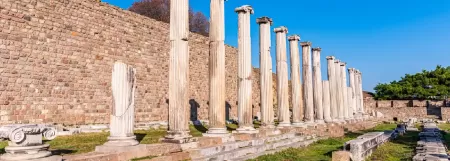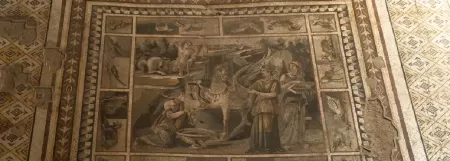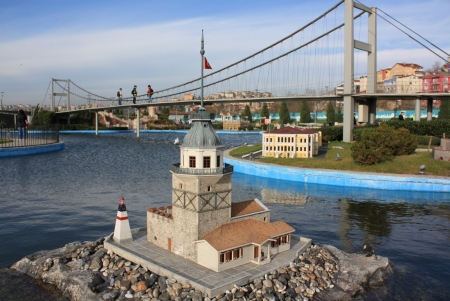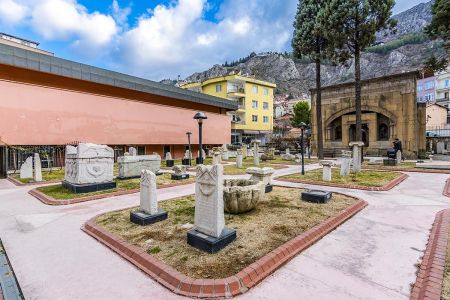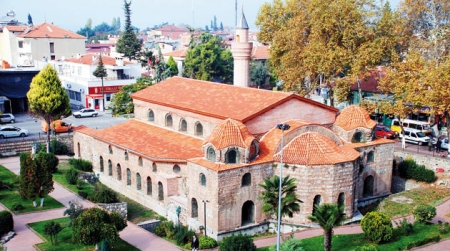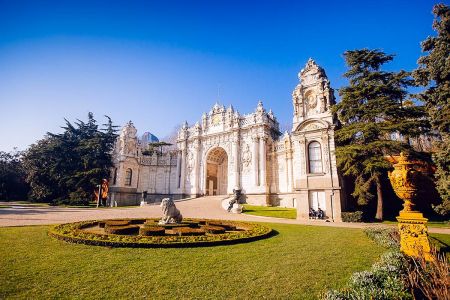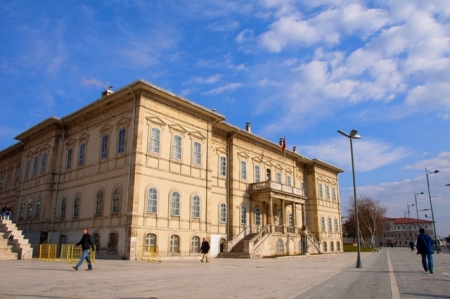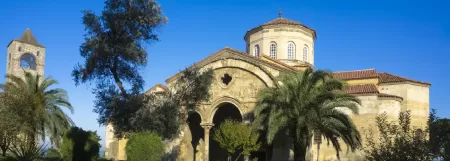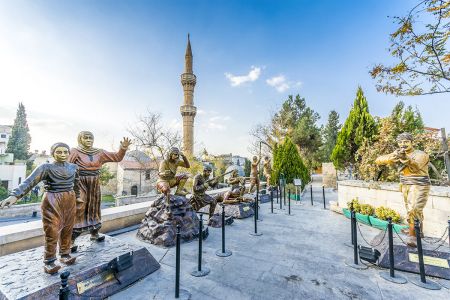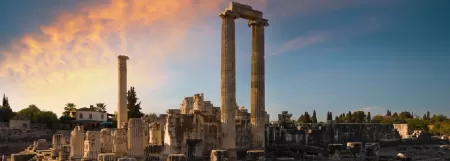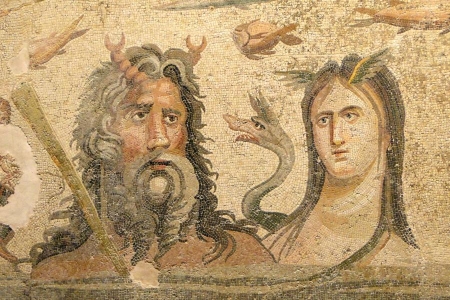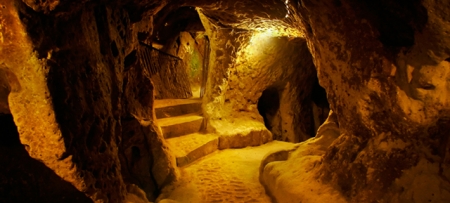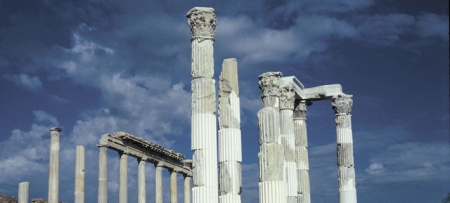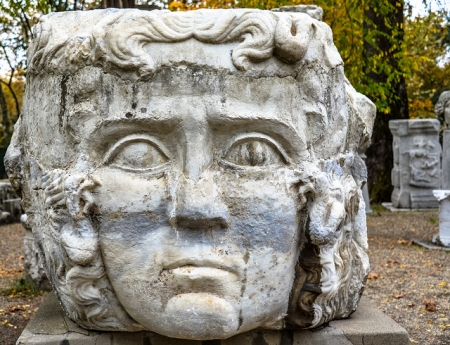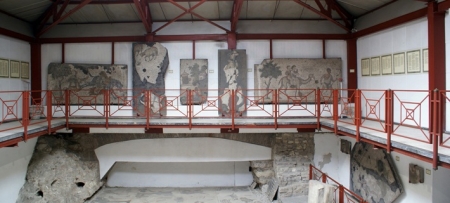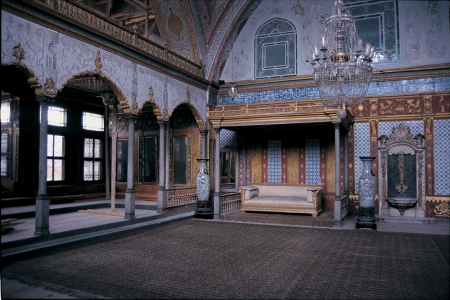Zelve Open Air Museum of Turkey
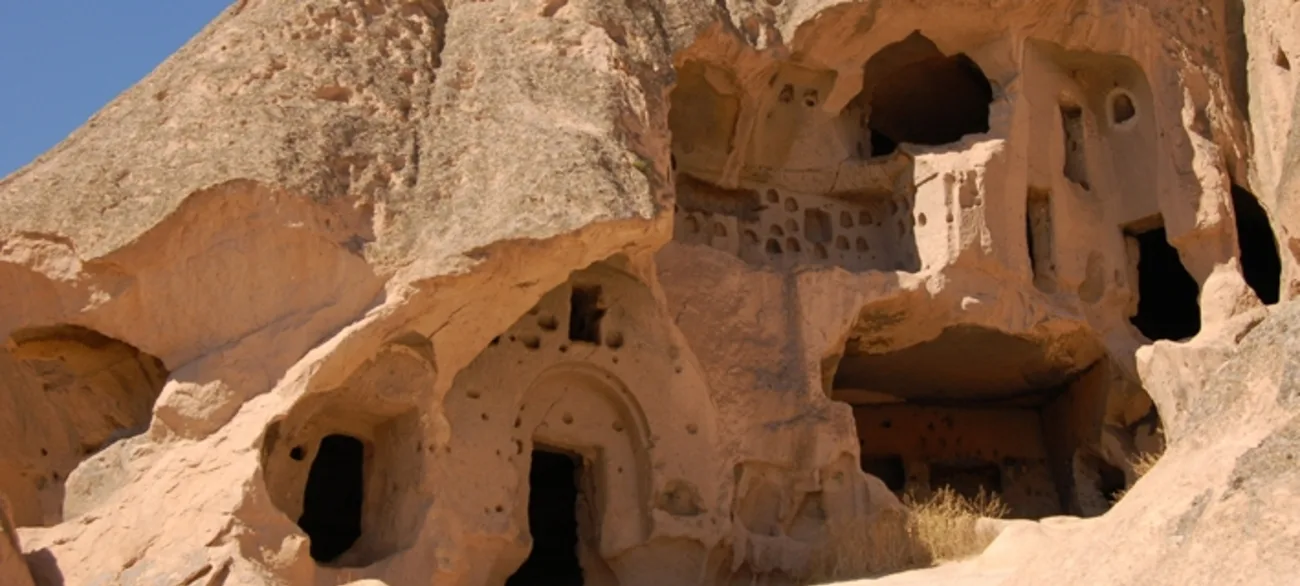
Zelve Open Air Museum houses fifteen Byzantine-era cave churches dating back to the 500s, making it one of Cappadocia's most historically significant sites. Here, you'll discover the highest concentration of fairy chimneys in the region, creating a surreal landscape that feels almost otherworldly. Unlike its more famous counterpart in Göreme, this hidden gem offers a more tranquil experience while being approximately four times larger.
Throughout its 800-year history, the Zelve Open Museum served as both a Byzantine monastic retreat and later a Turkish village where Christians and Muslims peacefully coexisted until 1924. In fact, the valley contained some of Cappadocia's first seminaries between the 9th and 13th centuries before safety concerns from erosion led to the community's evacuation in the 1950s. Located just 8 km from Göreme town center, you can now explore this UNESCO World Heritage site for only €12, considerably less than the €20 entrance fee at Göreme Open Air Museum. Whether you're fascinated by ancient religious history or captivated by unique geological formations, this comprehensive guide will help you navigate the three valleys of this remarkable historical treasure in 2025.
Book your Turkey Travel Packages Now!
History of Zelve Open Air Museum
The legacy of Zelve valley stretches back thousands of years, with archeological evidence suggesting connections to the ancient Hittites who inhabited the region around 2000 BC. However, the settlement truly began to flourish as a Byzantine monastic center, with the earliest churches dating to the 6th century AD.
Early Byzantine roots and Christian monastic life
Facing Roman persecution, early Christians sought refuge in Zelve's soft volcanic tuff, carving elaborate dwellings and religious spaces into the malleable rock. Monks initially settled here during the 9th century, establishing what would become one of Cappadocia's most significant religious centers. Throughout the following four centuries, Zelve developed into a thriving monastic community where Christian spiritual life flourished.
The daily routine of these Byzantine monks revolved around worship, labor, and contemplation. They spent approximately eight hours working during the summer months and four hours in winter. Their industrious community ground wheat, produced wine in carved presses, and raised livestock in underground stables. The monastery also trained priests in some of Cappadocia's first seminaries.
Four notable churches were constructed between the 9th and 13th centuries - the Direkli Church with its distinctive standing columns and high-relief crosses, the Balıklı Church (dedicated to fish), the Üzümlü Church (dedicated to grapes), and the Geyikli Church (dedicated to deer), which has now collapsed beyond recognition.
Ottoman period and Turkish-Muslim coexistence
Following the Byzantine era, Zelve transformed during the Ottoman period into a remarkable example of religious harmony. Turkish Muslims and Greek Christians lived side by side within the valley for generations. This peaceful coexistence is evidenced by the presence of both churches and a rare rock-cut mosque within the same community.
The demographic composition shifted dramatically after 1924 due to the population exchange agreement between Greece and Turkey. This mandated relocation resulted in Christians from Zelve moving to Greece, while Muslims from Greece settled in Turkey, making the community predominantly Muslim.
Despite these changes, the Turkish villagers respected and preserved much of the Christian heritage. They converted some churches into agricultural spaces but notably left most intact. Families continued the tradition of cave dwelling, expanding and adapting the ancient spaces to suit their needs as they farmed the land and raised livestock.
Abandonment and transformation into a museum
By the mid-20th century, erosion and rock falls created increasingly dangerous living conditions at Zelve. After two tragic deaths from collapsing rocks, including an eleven-year-old girl, the government deemed the settlement unsafe for habitation. Consequently, in 1952, the remaining inhabitants relocated to a newly established village called Yeni Zelve (New Zelve) or Aktepe, situated approximately 2 kilometers away.
Following fifteen years of abandonment, Turkish authorities officially designated Zelve as an open-air museum in 1967. Subsequently, it gained recognition as a UNESCO World Heritage site, acknowledging its exceptional cultural and historical significance.
Today, the Zelve Open Air Museum stands as a powerful testament to Cappadocia's multilayered history. Ironically, many visitors pass through the 'forgotten' Turkish history to enter the official museum, unaware that the surrounding cafés and shops are operated by former residents and their descendants. These families now make their living serving tourists who visit what was once their ancestral home.
How to Get to Zelve and What to Expect
Reaching the rocky landscape of Zelve requires some planning. Located in the heart of Cappadocia, this ancient settlement offers several transportation options and specific visiting conditions you should know before arriving.
Public transport and driving options
Situated approximately 8km from Göreme town center, Zelve Open Air Museum is accessible through multiple transportation methods. If you're relying on public transport, catch the bus heading toward Çavuşin and Avanos from the main bus station in Göreme. Buses depart hourly at 15 minutes past the hour, starting at 8:15 AM with the last departure at 8:15 PM. The fare costs 50 TL per person, and the bus will drop you at the turnoff to Zelve.
From the turnoff, prepare for a 3km walk (about 35 minutes) to reach the museum entrance. Alternatively, many travelers report successful hitchhiking experiences, as locals frequently offer rides to tourists walking along this route.
For more flexibility, consider these options:
- Rent a car in Cappadocia – both affordable and convenient for exploring multiple sites
- Hire a private driver with a customized itinerary (bookable online)
- Book a van with a driver for larger groups
Entrance fees and museum pass info
As of 2025, the entrance fee for Zelve Open Air Museum is €15 per person. This represents good value compared to the nearby Göreme Open Air Museum, which charges €20. For budget-conscious travelers, visiting Zelve instead of Göreme provides a less crowded experience at a lower cost.
If you're planning to visit multiple sites, consider these museum pass options:
- Cappadocia Museum Pass: €65 valid for 3 days, covering 13 museums including Zelve, Göreme, Derinkuyu and Kaymaklı Underground Cities
- Museum Pass Turkey: 1000 TL for 15 days, providing access to most major cultural sites throughout Turkey
For audio guidance, you can rent a device for 350 TL to enhance your understanding of the site. Take note that drones are not permitted within the museum grounds.
Opening hours and best times to visit
The Zelve Open Air Museum maintains seasonal hours:
- Winter season (October 31-March 31): 8:00 AM-5:00 PM
- Summer season (April 1-October 30): 8:00 AM-7:00 PM
Remember that the ticket office closes 45 minutes before the museum's closing time. Each visit typically takes around 1.5 hours to properly explore the site.
For the most pleasant experience, time your visit wisely. The valleys offer minimal shade, making spring (March-May) and autumn (September-November) the ideal seasons to visit. If traveling between June and August, avoid the midday heat by arriving early when the museum opens at 8:00 AM or later in the afternoon after 5:00 PM.
When planning your journey, note that Zelve consists of three distinct valleys with numerous cave dwellings, churches, and ancient living spaces. The paths involve some uphill walking, so wearing comfortable shoes and bringing water is essential, particularly during warmer months.
Zelve Open-Air Museum Tour
There is a tour of Cappadocia that has many of the highlights around Göreme that also includes a visit to Zelve Open-Air Museum. It's a good way to enjoy a guided examination of the foremost important locations in Cappadocia.
The tour is additionally pretty inexpensive. You'll be able to try which other places the tour visits and book online here. Once inside, you have got some options. The trail is kind of small, but it leads off in many directions.
As you'll be able to see within the photo below, there are several different-sized loops. We started by heading out along the correct trail, then trying to go to all of the spots within the three different valleys, as all of them provide something unique and have plenty of smaller dirt paths darting far from the most trails.
Exploring the Three Valleys of Zelve
The three valleys of Zelve each offer distinct experiences and historical treasures, creating a fascinating journey through Cappadocian history. Unlike many tourist sites, Zelve's 2-kilometer trail lets you explore freely, ducking in and out of ancient cave dwellings as you traverse the connected valleys.
Valley I: Churches and wineries
Entering Valley I, you'll immediately notice the several sixth-century churches characterized by their distinctive rock-relief decorations carved directly into the walls. The Üzümlü Kilise (Grape Church) and Balıklı Kilise (Fish Church) stand as prime examples of pre-Iconoclastic religious architecture. These churches feature minimal plaster paintings, instead showcasing rock-cut crosses and ochre-painted decorations that represent some of the oldest Christian symbols in Cappadocia.
Furthermore, Valley I houses a well-preserved bulgur mill combined with a bakery, demonstrating how daily life functioned in this ancient settlement. Nearby, you'll discover the community winery (şaraphane) where villagers once stomped grapes underfoot before collecting the juice in jars for fermentation. The resulting wine served both religious ceremonies and community celebrations.
Valley II: Monastery and Holy Cross Church
Moving into Valley II via connecting pathways, you'll find yourself surrounded by wider vistas and more extensive cave dwellings. The moderate trail winds uphill, revealing spectacular panoramic views of fairy chimneys stretching into the distance.
The highlight of this valley is undoubtedly the Holy Cross Church (Kutsal Haç Kilisesi), a large single-nave structure dating to the 500s. Its barrel-vaulted narthex features intricate carvings, including a zig-zag band above the door frame. Inside, the walls display five tall blind arches with recessed benches, while the back wall showcases two large Greek crosses with round disks at their centers. Additionally, a small funeral chapel adjacent to the main church contains ten child-sized graves, a poignant reminder of high infant mortality rates in Byzantine times.
The massive monastery complex nearby, now partially collapsed and off-limits, once connected four levels through an intricate maze of tunnels and shafts.
Valley III: Mosque, village square, and dovecotes
Valley III presents the most diverse structures, beginning with the golden-hued rock-cut mosque featuring an unusual minaret resembling a church bell tower—a design commonly found in early Ottoman architecture. Immediately opposite stands the village square, where Zelve's community gathered for weddings, religious feasts, and social events until 1952.
Throughout this valley, you'll notice rows of small square holes carved into fairy chimneys. These dovecotes (güvercinlik) were created by sealing off existing rooms and carving small entrance holes, providing roosting spaces for pigeons. Villagers collected the droppings as valuable fertilizer for farming, sometimes decorating the dovecotes with Islamic folk art to attract the birds.
Valley III also contains the Monastery with its four levels (now closed to visitors) and several Ottoman-era stables with visible troughs and animal tethering posts.
Hidden trails and panoramic viewpoints
Beyond the main paths, smaller dirt trails branch throughout Zelve, leading to exceptional vantage points and less-visited cave dwellings. Ascending these paths rewards you with breathtaking views across all three valleys—especially from the ridge above Church 4, where you can capture spectacular photographs of the entire settlement.
First thing to remember when exploring these hidden areas is to wear sturdy shoes, as some trails involve climbing up rocky surfaces. Throughout your journey, you'll discover multiple opportunities to explore cave rooms that rise several stories, though always respect barriers indicating unsafe areas affected by ongoing erosion.
Altogether, the moderate 2-kilometer trail connecting all three valleys takes approximately 1.5-2.5 hours to explore thoroughly, depending on how much time you spend investigating individual caves and hidden pathways.
Zelve vs Göreme: Which Open-Air Museum to Choose?
When deciding between Cappadocia's two main historical complexes, you'll encounter distinct experiences that cater to different interests. Each open-air museum offers unique perspectives on the region's rich heritage.
Preservation and frescoes
The distinguishing feature between these sites primarily revolves around their artistic elements. Göreme Open Air Museum, recognized as a UNESCO World Heritage site, showcases some of Cappadocia's most spectacular Byzantine art. Its churches contain vivid, well-preserved frescoes dating from the 10th and 11th centuries that depict biblical scenes in remarkable detail. The Dark Church stands out as the crown jewel, with its exceptionally well-maintained religious paintings.
In contrast, Zelve Open-Air Museum features fewer decorated surfaces. Most of its churches display simple rock-cut and ochre-painted crosses rather than elaborate plaster paintings. This difference exists because restoration projects in Cappadocia focus on enhancing original artwork without recreation, preserving authenticity above all.
Crowds and atmosphere
Visitor experience varies dramatically between these locations. Generally, Zelve attracts significantly fewer tourists despite being approximately four times larger than Göreme. This creates a more relaxed atmosphere where you can explore ancient dwellings at your own pace without feeling rushed.
As one visitor noted, "I preferred Zelve as it was a larger area with fewer visitors where you could roam more freely." This spaciousness makes Zelve particularly appealing for families with children who appreciate the freedom to wander and discover.
Customize Your Dream Vacation!
Get in touch with our local experts for an unforgettable journey.
Plan Your TripMeanwhile, Göreme typically hosts larger crowds throughout the day, sometimes requiring visitors to wait in line to enter popular churches. The environment feels more structured and curated, beneficial for those seeking organized historical information but potentially overwhelming during peak seasons.
Accessibility and cost
Currently, the financial difference between these sites is considerable:
- Zelve Open-Air Museum: €13 entrance fee (2025)
- Göreme Open-Air Museum: €20 entrance fee (2025)
Both museums require approximately two hours to explore thoroughly, making Zelve the more economical choice without sacrificing historical significance. Accordingly, visitors seeking value might favor Zelve, whereas those specifically interested in Byzantine religious art might consider Göreme worth the premium.
Facilities at both locations include cafés and souvenir shops, plus both recommend wearing sturdy shoes for navigating uneven terrain and occasional staircases. Ultimately, your choice depends on whether you prioritize artistic preservation (Göreme) or a more immersive, less crowded historical experience (Zelve).
Tips for Visiting Zelve Open Museum in 2025
To make your exploration of Zelve's ancient valley communities truly enjoyable, proper preparation is essential. These practical tips will help you maximize your visit to this remarkable historical site.
What to bring and wear
Preparing for the terrain and climate at Zelve Open-Air Museum requires thoughtful packing:
- Water supplies are crucial as the valleys offer minimal shade, and walking can be dehydrating in Cappadocia's dry climate. Collapsible water bottles are particularly convenient for exploring.
- Sun protection is non-negotiable regardless of season. Even in early March, visitors report being grateful for having sunscreen. Pack sunglasses and a sun hat for additional protection.
- Comfortable footwear with good grip is absolutely necessary as the paths involve uphill walking and occasionally uneven terrain. Many travelers emphasize that this is not a flip-flop-friendly destination.
- Lightweight clothing is advisable during summer months, primarily cotton garments that breathe well. For spring or autumn visits, layering options help adapt to temperature changes.
The site has limited facilities once you enter, hence restrooms located outside the museum entrance cost 10TL to use. Consider visiting these facilities before starting your exploration.
Photography rules and safety
Zelve presents excellent photography opportunities, albeit with important restrictions:
- Church interiors prohibit photography - regardless of whether you use flash. This rule protects the ancient frescoes from light damage.
- Drones, gimbals, and tripods are strictly prohibited throughout the museum grounds. Security personnel monitor compliance with this rule.
- Safety barriers mark potentially dangerous areas affected by ongoing erosion. Respect these boundaries as rock falls present real dangers.
- Stroller-friendly paths are limited, making baby carriers the recommended option for families with young children.
For your safety, remain on marked paths and avoid climbing on fragile structures. Two previous fatalities from collapsing rocks led to the original evacuation of residents.
Recommended tours and guides
For a comprehensive experience, consider these guided options:
- Small group tours covering Zelve plus additional attractions provide excellent value. A nine-attraction tour including lunch and a pottery workshop costs less than the Cappadocia Museum Pass while covering entry fees.
- Red Tour packages typically include Zelve Open-Air Museum, Monk Valley (Paşabağları), and other key sites with English-speaking guides.
- Allow a minimum of two hours for proper exploration of Zelve's valleys. Rushing through misses the contemplative atmosphere that makes this site special.
Ultimately, whether exploring independently or with a guide, Zelve rewards visitors who take their time to discover its hidden corners and appreciate its remarkable history.
Zelve Open Air Museum stands as a remarkable testament to Cappadocia's multilayered history. Though less frequented than Göreme, this historical treasure offers a considerably more authentic and tranquil experience. The three valleys showcase an extraordinary blend of Byzantine churches, monastic retreats, and Ottoman-era dwellings carved into fairy chimneys, telling the story of peaceful coexistence between different religious communities.
Unlike other tourist destinations, Zelve allows you to explore freely at your own pace, discovering hidden chambers and pathways that once housed thriving communities. Additionally, the €15 entrance fee makes it a more budget-friendly alternative without sacrificing historical significance or natural beauty.
Whether you choose to visit during the golden hours of early morning or late afternoon, you'll find yourself transported through centuries of fascinating history. The vast expanse of interconnected valleys rewards those who take their time to venture beyond the main paths. Above all, proper preparation with comfortable footwear, water, and sun protection ensures your journey through this ancient settlement remains comfortable and memorable.
Certainly, the lack of elaborate frescoes might draw some visitors toward Göreme instead. However, what Zelve lacks in painted decoration, it undoubtedly makes up for with its serene atmosphere, authentic historical structures, and the ability to wander without crowds. This forgotten village, once home to generations of cave-dwellers, now offers a rare glimpse into Cappadocia's past that feels both intimate and profound.
FAQs
Q1. What are the main differences between Zelve and Göreme Open Air Museums?
Zelve is larger and less crowded, offering a more extensive area to explore with three valleys containing ancient churches and cave dwellings. It has fewer frescoes but provides a more authentic and tranquil experience compared to Göreme.
Q2. How much time should I allocate for visiting Zelve Open Air Museum?
Plan to spend approximately 1.5 to 2.5 hours exploring Zelve thoroughly. This allows enough time to navigate the 2-kilometer trail connecting all three valleys and investigate individual caves and hidden pathways.
Q3. What should I wear and bring when visiting Zelve Open Air Museum?
Wear comfortable shoes with good grip for uneven terrain. Bring water, sun protection (hat, sunscreen, sunglasses), and dress in lightweight, breathable clothing. Consider layering options for spring or autumn visits.
Q4. Are there any photography restrictions at Zelve Open Air Museum?
Photography is generally allowed, but it's prohibited inside church interiors to protect ancient frescoes. Drones, gimbals, and tripods are strictly forbidden throughout the museum grounds.
Q5. Is the Zelve Open Air Museum worth visiting compared to Göreme?
Yes, Zelve offers a unique and valuable experience. It's less crowded, more budget-friendly, and provides a more immersive historical experience. While it has fewer frescoes than Göreme, it compensates with its serene atmosphere and authentic structures.

